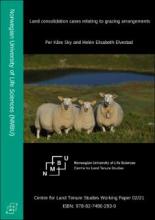/ library resources
Showing items 1 through 9 of 17.The growing awareness of the negative impact of agriculture on the natural environment creates social expectation towards the reduction of this impact through the pro-environmental activities of farmers.
National parks and other forms of protection ensure the natural values in the European Union. However, a significant part of protected areas is under agricultural cultivation, and the two sectors have been kind of opponents to each other for a long time.
Participatory water governance has become highly influential around the world as a means for managing water resources.
Driven by the development of information and communications technology as well as the spread of social networking services (SNS), access to spatial information has changed the way people select sites or areas.
Understanding factors that motivate conservation behavior among farmers is crucial to addressing societal, soil, water, and wildlife conservation goals.
Five Southeast Asian countries (Thailand, Vietnam, Laos, Philippines and Malaysia) have experienced forest transitions, that is, a shift from net deforestation to net increases in forest area, since the 1990s.
In most countries, land consolidation was first introduced in rural areas, with legislation suitable for urban areas being drafted at a later date. This is also true of Norway. The first evidence of urban competency in the legislation is found in the Land Consolidation Act from 1950.
Land consolidation courts deal with cases where the relationship between holders of grazing rights needs be regulated, but also where the rights holders are competing with other potential land uses, such as building holiday cabins, forestry, hunting, etc.
Land acquisitions are transforming land-use systems globally, and their characteristics and impacts on human well-being have been extensively analysed through local case studies and regional or global inventories.
Paginação
Land Library Search
Through our robust search engine, you can search for any item of the over 73,000 highly curated resources in the Land Library.
If you would like to find an overview of what is possible, feel free to peruse the Search Guide.




